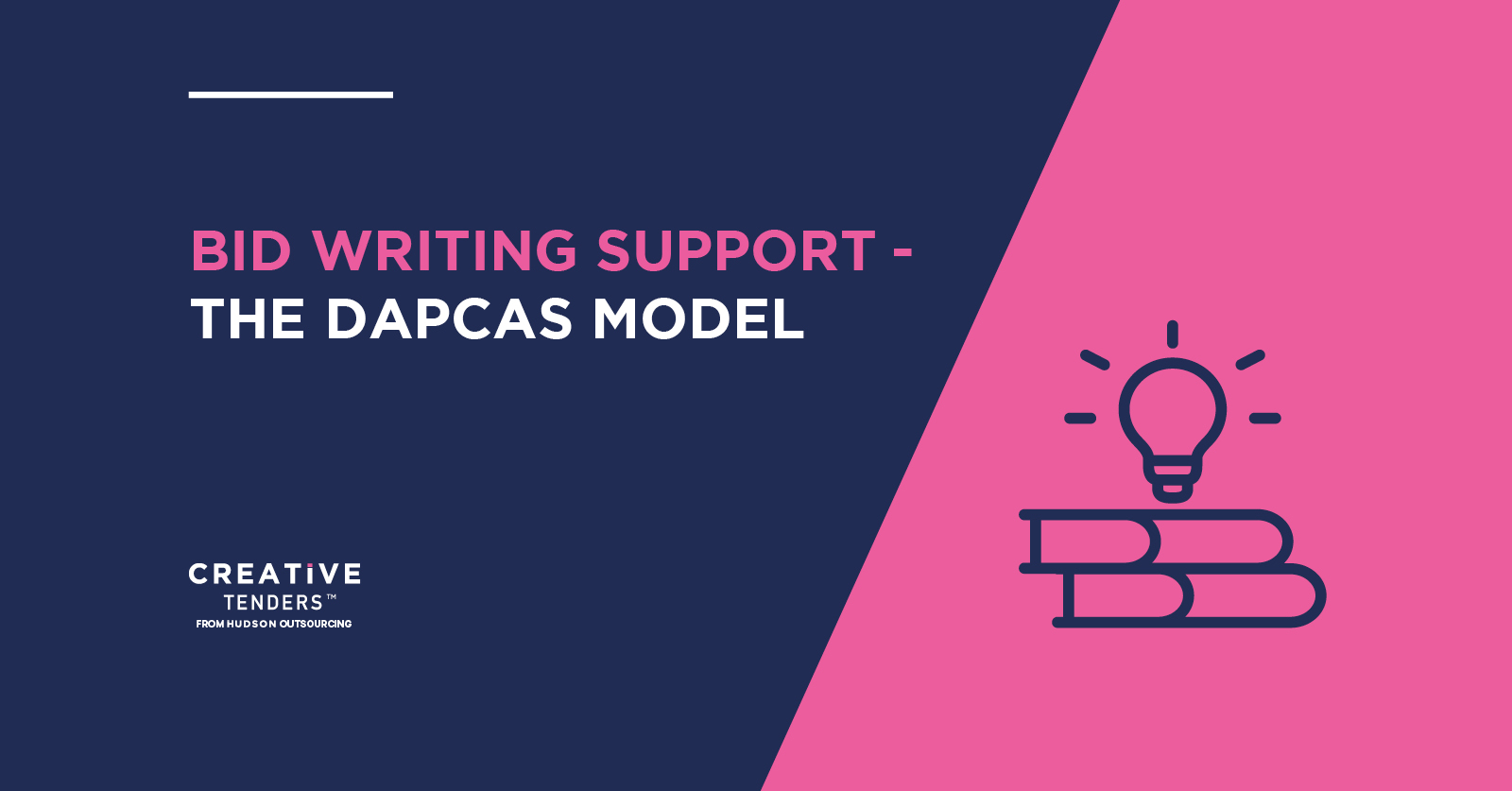BID WRITING SUPPORT – THE DAPCAS MODEL

BID WRITING SUPPORT – THE DAPCAS MODEL
Bid writing support can be varied and contradictory – that’s why we invented the DAPCAS model, to boil down the tendering process into its most simplistic formula. Here is a short breakdown to outline the parameters of the model.
D is for Decipher
Before you start tendering you need to decipher the opportunities that you want to go for.
Do NOT just go for any opportunity in the hope of being successful. This is not only a waste of time and money but weakens your overall tendering approach.
When starting any business, these are some of the questions you need to ask yourself, so that you understand your place in the market and set defined goals to succeed in tendering.
Start by asking yourself three simple questions; What services do you ideally want to deliver? Where do you want to deliver these services? and Who is your ideal buyer?
Once you have the answer to these questions, you then need to source the relevant opportunities. You can do this by signing up to our sector-specific portals, where you can receive daily tender opportunities that remain specific to your service/offering. Our service will signpost you directly to the client/buyer via published notices across the thousands of websites/portals that remain across the UK alone.
A for Assess
To bid or not to bid. That is the question!
After you have deciphered what you want to start tendering for, and you have sourced an opportunity, you then need to conduct an assessment to make sure it is 100% worthwhile. Remember the contract title doesn’t tell you everything!
A few questions to try answering, in order to gage the feasibility of the bid are; Have you delivered work like this before? Do the opportunity outcomes align with your long-term strategy? Is it financially viable? What is your USP in the market sector?
Have a look at our ‘To Bid or Not to Bid’ for further information into ways of assessing the opportunity at hand.
P for Plan
One of the deciphering factors, as to whether your bid will be successful, is the planning of the whole tender process itself.
Each tender is different and in turn, the planning must evolve to match the specification. You should define clear-cut milestones for what needs to be actioned, when and who is responsible for the deliverables.
The volume of an Invitation to Tender (ITT) can range from half a page to 100 pages long and contain pertinent information that it is imperative to consider. Our bid writing support experts advise that each document should be read one by one with the following aspects in mind;
- Reading Instruction – You should over-allocate time for this step as the instructions should contain everything from practicalities such as where to submit the tender to design requirements for word count, font size and style.
- Submission Deadline – Obviously this is a crucial aspect as tender deadlines are very strict, a delayed submission of one minute could result in the dismissal of your bid.
- Clarification Deadline – Some aspects may be unclear or missing from the specification, this is your chance to ask questions so also keep a note of this deadline.
C for Compose
Business owners/managers may not have the time, skills or resource to pull together a high-quality bid that is concise, detailed and exceeds buyer expectations. Writing is not everyone’s cup of tea – especially when you operate a fully functioning business.
Hence the reason why bid writing support exists and our Tender Consultants offering is highly sought.
However, should you wish to carry out the writing process yourself, there is one fail-safe process to ensure high-quality results. The PEE method;
- POINT – This is where you state what you are going to do, or what you are already doing. This should be clear and concise.
- EXPLAIN – As it says on the tin, explain how you are going to deliver the desired outcome.
- EVIDENCE – It is no good talking about achieving something if you can’t back-up the fact that you have already accomplished something to demonstrate that you are a worthy winner.
A for Analyse
This step is something that remains an absolute necessity throughout the tendering process. We advise that you create multiple drafts and have them reviewed by multiple colleagues or be even more thorough and ask a new employee to read over the document to ensure that the inner workings of your company can be understood by somebody with little prior knowledge of your structure and function.
You should never assume that the reader shares the same depth of knowledge about your company as you.
S for Submit
As simple as this step might sound, to a tender newcomer, it can be very daunting. You should take thorough precautions to ensure that your bid is submitted within the deadline.
If the bid is due in at 13:00 and you submit it at 13:01 – you’re out!
Once you have successfully submitted the bid you should always receive some form of acknowledgement that the bid has been received, this is most commonly done via email or an online portal.
For further guidance and expert bid writing support, please see our Tender Consultants platform.
Similar Insights

Media Monitoring Tenders
Read Article